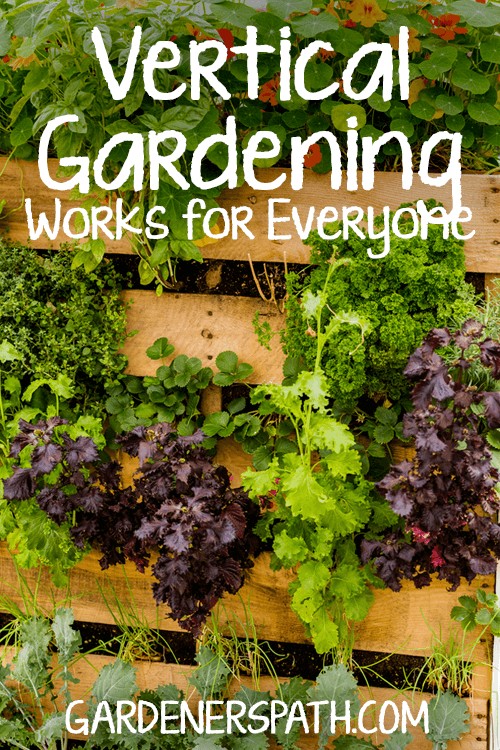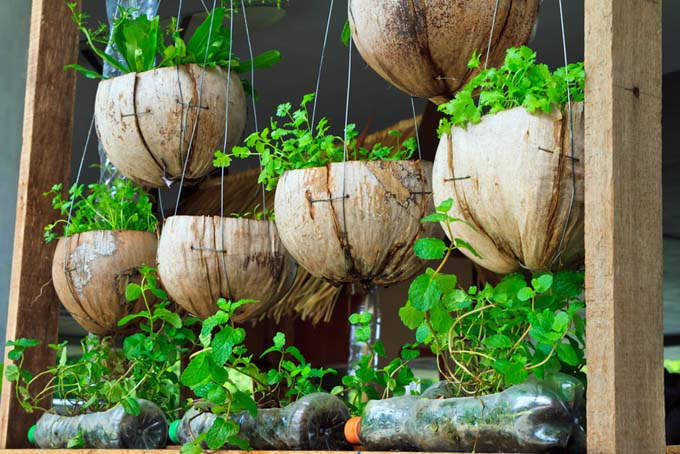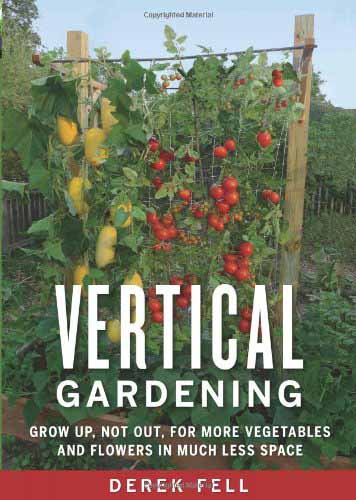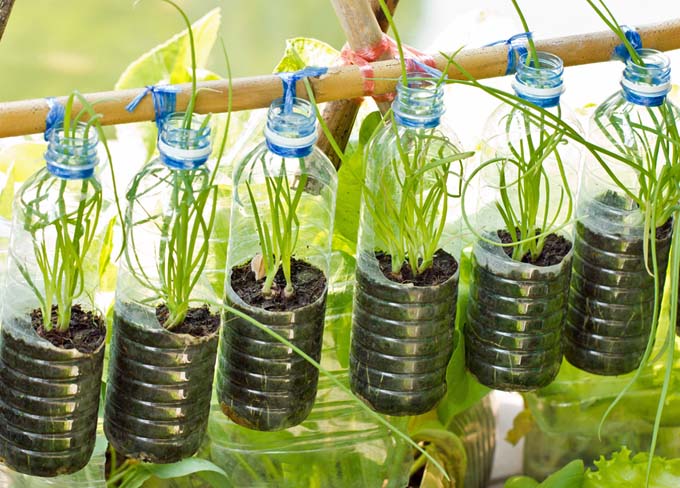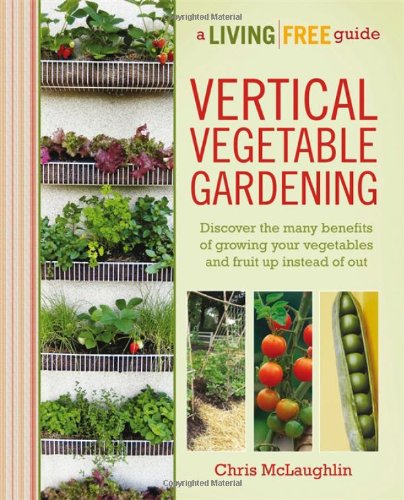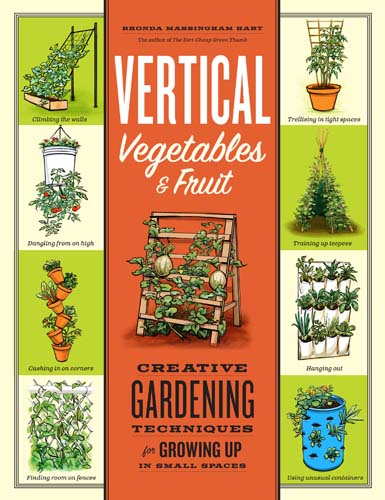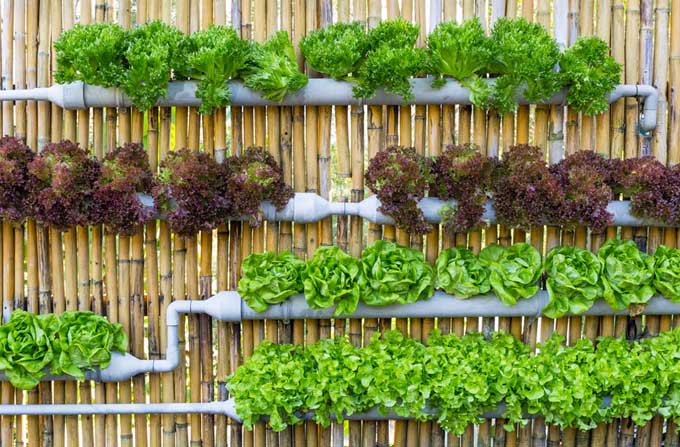For centuries people in the United States grew their own fruits and vegetables. This allowed us to spend less money at the store (if they even existed) and more time at home. Think about how much of your time is spent at work and how much of that money earned is going toward your produce. Could you work less if you spent less? For most people, that answer is yes. Taking a step toward self-sufficiency begins with gardening. It also makes sense that if you are growing your own fruits and vegetables to save yourself some time and money, you will want to get the most out of your garden without spending all of your time taking care of it. You may benefit from growing your plants vertically and it is my personal opinion that everyone would choose to if they knew and understood more about it.
The Concept of Vertical Gardening
Vertical gardening produces a great deal of food in a very small space. There are hundreds of things that can be grown vertically that will yield large crops from just a few square feet of space.
To begin with, you must lose your vision of gardening in rows. Vertical planting is done in block areas or even in pots or small, raised beds. Do you enjoy weeding? Most people don’t! By planting a garden that grows upwards, dealing with weeds becomes a thing of the past. The time saved in weed control is only one of the benefits. Plants such as strawberries, lettuces, peppers, carrots and the like can be planted in containers that are stackable. You can purchase pots like these or create your own step-style containers for these items. This type of gardening also requires less water. You typically are using containers or raised beds, which do not allow the precious water to leech out into the rows between planted items like in a typical garden. Again, this allows you to grow far more in much less space than if you were planting traditional rows.
Getting Started
The first thing that you want to do is decide what you’d like to plant. Tomatoes are a very popular choice because so much can be made from the delightful fruits. Imagine being able to create your own pasta sauces, soups with stewed tomatoes and fresh tomatoes on summer salads. Tomatoes are also relatively easy to can, if you’d like to save your summer crops for winter goodies. To keep your garden as organic as possible, choose heirloom seeds that are labeled “Non-GMO” so that you know you are starting with seeds that have not been genetically altered in any way.
You can utilize pots to grow tomatoes and many other varieties of plants. I know someone who grew over twenty pounds of potatoes in a simple, five gallon bucket. Carrots are another great possibility. You are only limited by your imagination! To add something to containers for your plants to climb on, get creative. Old objects that can be recycled from around the house are perfect. Old wire hangers can be used to create twisted, artistic creations that add to the look of your pots and give your vines something to grow on. All you need is a place where adequate sunlight can be found. Think about areas on patios, steps, in windows, on decks and even on rooftops of apartment buildings. We also recommend Vertical Vegetable Gardening: A Living Free Guide Growing your vegetable crops in containers a great choice if you live in an apartment. Beans, potatoes, carrots, tomatoes, cucumbers, strawberries and much more will thrive in containers. For vertical gardening outside, the sky is the limit! For an outdoor garden of this type, not much space is needed. Pots can be utilized, raised beds are an excellent choice and typical growing locations in your yard is all completely fair game. By planting in square grids and leaving yourself space to walk and move through the plantings, you will find it easier to maintain and there will be far less weeding.
Ideas For Outdoor Gardens That Are Simple And Easy To Maintain
For outdoor gardening, one of my favorite ideas is to use old pallets. Many feed stores give them away. It isn’t hard to find pallets, once you start looking for them.
Laying down a barrier of some sort under the pallets, like some old newspapers, will provide a weed barrier and compost too. You will have no need to weed. Lay the pallets down on top of your barrier, one to two thick depending on the things you are planting, then fill them with good soil. Potting soil can be purchased in bags or you can have a truck deliver a load of good topsoil for you. Now you have perfect little rows with no weeds to worry about. When the season is done, the pallets can be removed and the soil can be set aside and worked for next year, with a little upkeep and composting. Pallets can be stood on end, or leaned together a-frame style. By adding some simple hinges to a couple of pallets, you can stand them up in varying patterns and use them year after year. The beauty of this is that it grows up to heights that make it easy for people to take care of. If you are wheelchair bound or have a very bad back, this makes it possible for you to reach your crop without stooping and bending. A good example is green beans. If allowed to grow upwards, rather than crawling on the ground, some varieties will grow over five feet tall! This one’s also great: Vertical Vegetables & Fruit: Creative Gardening Techniques for Growing Up in Small Spaces By allowing your plants to grow up instead of spreading on the ground, they have far more room to produce vegetables. You can easily triple the amount of produce you harvest from the same amount of seeds. Pole beans will continue to add new growth all season long, so you will have more beans than you can probably eat from just a two foot square of ground space.
Other Ideas…
You can get very creative with the space used for your garden. If you have fences, consider hanging baskets of plants all over your fence. Go to mobile home dealers and ask them for any old steps they have.
In many cases, they have some that the wooden steps have rotted and fallen from. Add a couple of new boards and you’ll have some excellent plant shelves. Old chairs can be used to allow plants to climb on, hang baskets from the back and s place pot in the seat. You can grow three things on that old chair in the space of less than two cubic feet. Some great places to seek ideas on container and vertical growing are Pinterest, Facebook and YouTube. Remember that the last big advantage of growing in your own space is the satisfaction you receive. It should be fun and rewarding. Let your personality and your own style shine through. A garden is a place where you can be meditative and in your own “happy place” so you should fill it with things that put you in that frame of mind. Happy growing! © Ask the Experts, LLC. ALL RIGHTS RESERVED. See our TOS for more details. Product photos via Rodale Books, Alpha Publishers, and Storey Publishing. Uncredited photos: Shutterstock.
